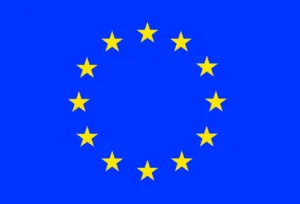The European Parliament, the Council and the Commission have agreed on how to coordinate the use of the 700 MHz band to bring mobile internet services to all Europeans and new applications across borders, thus facilitating the introduction of 5G as of 2020.
Demand for wireless connectivity using smart phones and future 5G devices is continuously growing. By 2020 there will be nearly eight times as much mobile internet traffic as today. This connectivity depends on radio spectrum – the key and finite resource for wireless communications. Since radio frequencies know no borders, the timing of spectrum release needs to be better coordinated at EU level to avoid interference. This will also help innovative services, such as connected cars, remote health care, smart cities or video streaming on the move to work across the continent.
Tonight, negotiators from the European Parliament, the Council and the Commission reached political agreement on an EU-wide approach for the use of the ultra-high frequency (UHF) band (470-790 MHz) including the 700 MHz band (694-790 MHz). This agreement builds on a proposal presented by the Commission in February 2016. The Council reached its common position on 26 May and the Parliament (ITRE Committee) – on 10 November. Both institutions are expected to formally endorse the agreement in the coming weeks.
Tonight’s agreement is also the first deal made under the Digital Single Market strategy presented by the Commission in May 2015.
Andrus Ansip, Vice-President for the Digital Single Market, welcomed today’s agreement: “Better spectrum coordination is vital to provide higher quality internet to all Europeans. It paves the way for 5G, the next generation of communication networks, and the internet of things. We made a first step today with a joint approach to use the 700 MHz band in the EU.
We should go further and this is one of the main objectives of our new Electronic Communications Code and 5G action plan presented earlier this year. We should progress as swiftly on these initiatives which are essential to have first-class connectivity in the Digital Single Market. We struck a first agreement today, we should reach many more as soon as possible”. (recent blog post on Connectivity, radio spectrum and the Digital Single Market: preparing for the future).
Günther H. Oettinger, Commissioner for the Digital Economy and Society, said: “A coordinated strategy for the whole UHF band asserts our European vision. It ensures that Europeans can access innovative services and creative content on the move from their tablets and smartphones, as well as on smart TV sets at home. The coordinated release of the 700 MHz band is major leap forward on the Union’s path to 5G”.
The ultra-high frequency (UHF) band comprises the range 470-790 MHz and is currently used for digital terrestrial television and for wireless microphones in programme making and at special events. As a result of today’s agreement:
- The 700 MHz band should be assigned to mobile operators and made available for wireless broadband use by 30 June 2020 at the latest in all EU Member states. Duly justified exceptions – on grounds defined in the Decision – are possible until 30 June 2022.
Member States will adopt and make public their national plans for releasing this band by 30 June 2018. They will need also to conclude cross-border coordination agreements by the end of 2017.
- In the sub-700 MHz band (470-694 MHz), long-term priority is given to broadcasting use until 2030. This is balanced with the opportunity for each Member States to take a more flexible approach to alternative spectrum use – such as advanced mobile multimedia services – according to different levels of digital terrestrial television (DTT) take-up. The Commission shall also review the use of this band with a view to ensuring efficient spectrum use.
The coordinated approach laid down through this Decision links to the wider Commission proposals to reduce divergences between regulatory practices and for greater coordination of the assignment of radio spectrum outlined in the draft European Electronic Communications Code in September 2016. (Press release, MEMO) The Code proposes long licence durations, coupled with more stringent requirements to use spectrum effectively and efficiently. It also proposes to coordinate basic parameters, including the timing of assignments to ensure timely release of spectrum to the EU market and more converged spectrum policies across the EU with the aim to provide full wireless coverage across the EU.
Background
The ultra-high frequency (UHF) band comprises the range 470-790 MHz and is currently used for digital terrestrial television and for wireless microphones for programme making and special events.
Today’s agreement will provide more valuable spectrum for wireless broadband in the 700 MHz band by 30 June 2020. This band is ideal for providing high-quality internet to users whether they are indoors in a large city, in a small distant village or on a highway. Frequencies in the sub-700 MHz band will remain available, as a priority, for broadcasting, thereby preserving Europe’s audiovisual model, which offers free-to-view public broadcasting. However, the latter band could be flexibly used for other technologies or services in support of 5G innovation and in accordance with national broadcasting needs.

